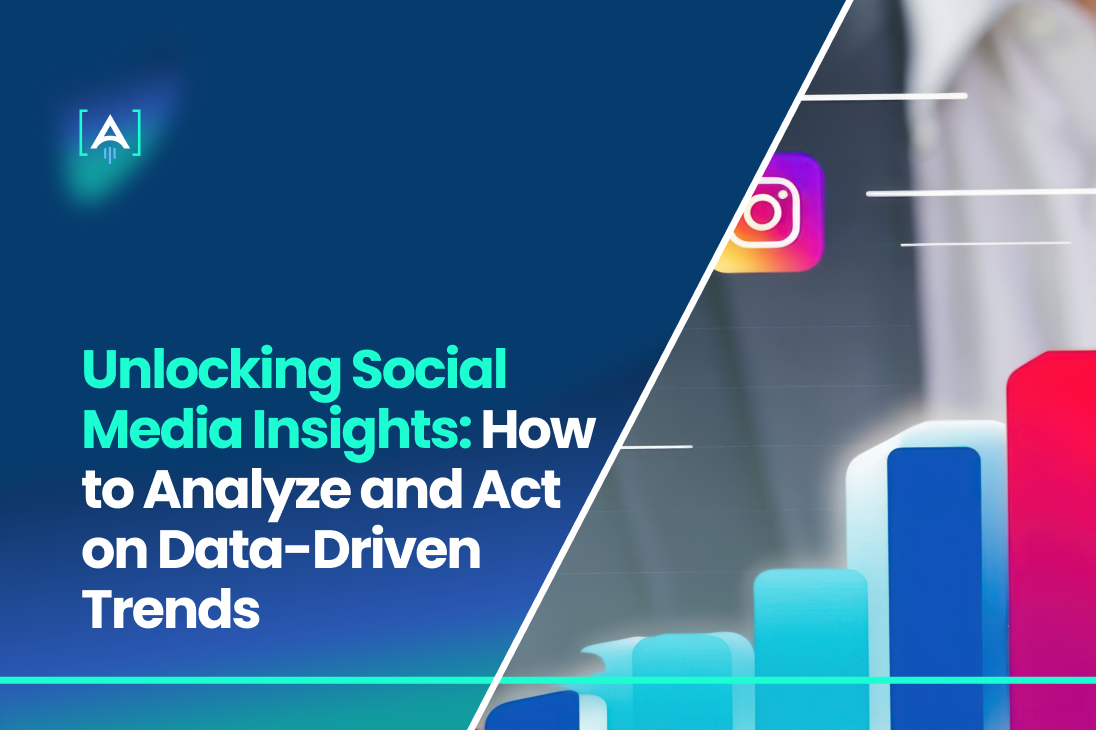Is your business truly leveraging the full potential of social media insights, or are you missing out on valuable opportunities?
In today’s fast-paced digital landscape, nearly 91% of businesses use social media platforms for marketing, but only a fraction effectively harness the data to drive growth.
The challenge for many companies is not just gathering data but knowing how to interpret it and turn those insights into actionable strategies.
Without a clear plan, you risk falling behind the competition and losing engagement across key social media channels.
To stay ahead, businesses need a strong social media marketing strategy backed by data-driven insights.
Partnering with a Social Media Marketing Agency can help transform the way you approach social media.
By using advanced social media analytics tools, you can dive deep into user behavior, optimize your social media campaigns, and align your messaging with current trends.
The Truth About Social Media Insights: What You’re Overlooking
Social media is more than just a platform for brand visibility; it’s a goldmine of social media insights that, when properly analyzed, can fuel business growth.
However, many brands overlook the deeper layers of this data, failing to turn numbers into action.
Let’s dive into some of the most common blind spots businesses face when managing their social media efforts and how to leverage social media analytics effectively.
The Data You Don’t See: Patterns in Audience Behavior
While businesses often focus on engagement metrics—likes, comments, and shares—these social media metrics only scratch the surface.
Hidden beneath these surface numbers is social media data that holds valuable insights into audience behavior:
- Engagement Time Patterns: When does your audience actually engage? You might be posting at times when your target audience is less active. Social media analytics tools like Meta Business Suite and Google Analytics can help you identify peak engagement times, allowing you to schedule social media posts when they are most likely to gain traction.
- Content Preferences: Your audience’s actions—clicks, shares, and time spent viewing—reveal what type of content resonates most. Are they engaging more with user-generated content campaigns, videos, or blog links? Knowing this can shape your social media content curation and ensure every post is meaningful.
- Cross-Channel Insights: A social media strategy often spans multiple platforms, but do you know which one works best for each type of content? Analyzing how your audience behaves on different social media platforms can inform your approach, helping you optimize your efforts across channels. For instance, Instagram Stories might outperform Twitter threads, while LinkedIn might be best for thought-leadership posts.
Side note: Platforms like Hootsuite and Sprout Social offer cross-channel analytics that can give you a panoramic view of audience engagement across various platforms, helping you track and fine-tune your content for each channel.
The Disconnect: Turning Data into Actionable Strategies
Data collection isn’t the issue for most businesses; it’s knowing how to turn that data into a working strategy that leads to business growth.
Many marketing teams collect massive amounts of raw data but fail to transform it into actionable insights.
Here’s why the disconnect happens:
- Lack of Data Context: Numbers without context are meaningless. It’s one thing to know your social media efforts brought in 10,000 impressions, but do you understand why those impressions didn’t turn into clicks or conversions? Conducting regular social media audits to evaluate both your content and audience can help bridge this gap.
- Focusing on the Wrong Metrics: Many businesses chase vanity metrics (likes, shares) without considering key metrics that align with business goals, such as conversions, click-through rates, and social media lead generation. It’s essential to tie your social media insights to overall business KPIs. Social media analytics tools like Brandwatch and Google Analytics allow you to track conversion paths from social to site.
Beyond Vanity Metrics: The Power of Sentiment and Follower Growth
It’s easy to get wrapped up in vanity metrics, but the valuable insights lie in the deeper data—things like sentiment analysis and follower growth trends.
Here’s what to focus on:
- Sentiment Analysis: Knowing what people say about your brand is just as important as how often they engage. Social listening insights can uncover how your audience feels about your content or your brand. Are the comments mostly positive or negative? Are people recommending your product, or are they complaining? This is crucial for monitoring brand reputation and can help you adjust your tone or even product offerings based on real-time feedback.
- Follower Growth Over Time: Growing your audience isn’t just about gaining new followers; it’s about building a target audience that’s engaged. By analyzing follower growth over time, you can identify what specific strategies caused spikes or dips in growth. For example, a social media retargeting campaign might bring in high-quality followers, while certain content pieces may result in a sudden drop.
Quick Tip: Tools like Sprout Social or Hootsuite offer demographic data on your followers, including age, location, and interests. Use these insights to tailor your content and social media marketing strategy to your most engaged demographic.
- Follower Engagement vs. Growth: A high number of followers doesn’t guarantee engagement. If your engagement is dropping while your follower count is rising, this signals a potential mismatch between your content and your audience’s expectations. To combat this, consider refreshing your social media storytelling approach by incorporating more user-generated content campaigns and personalized messages.
Data with a Pulse: How Social Media Insights Tell a Story
When it comes to social media insights, many businesses only see numbers, graphs, and dashboards. But these metrics are much more than that.
They’re not just cold, hard data points—they’re real-time stories of what your audience cares about, how they feel, and what they want.
By reading between the lines of this social media data, businesses can extract valuable insights to craft better strategies, create more engaging content, and, ultimately, drive growth.
Audience Behavior: The Story Behind the Numbers
Every like, share, comment, and click is a puzzle piece that helps build a narrative around your target audience. But what’s the bigger picture?
Social media insights reveal not just what your audience does but why they do it.
- Interests and Preferences: Social media engagement metrics go beyond just showing how much attention your posts are getting. By looking at which content garners the most likes or shares, you can identify what truly resonates with your audience. Is it long-form educational posts, short bursts of humor, or user-generated content campaigns? Understanding this helps you tailor your social media content curation to their tastes.
- Sentiment Analysis: It’s not just about what people are saying but how they feel about it. With tools like social listening insights, you can dig deeper into the emotions driving the conversation around your brand. Are your audience’s mentions positive, negative, or neutral? This understanding allows you to adjust your tone or even your offerings in response to customer feedback.
Example: A fitness brand may notice their followers engage more with posts about quick workouts rather than long, detailed training programs. This provides actionable insights—focus on creating more quick tips, perhaps even launching bite-sized video tutorials to meet the demand.
Turning Data into Personas: Humanizing the Raw Data
One of the most overlooked applications of social media data analysis is using it to build detailed customer personas.
While social media platforms provide raw data, it’s up to businesses to extract meaningful insights and turn that information into a clearer picture of their audience.
Here’s how you can transform raw data into actionable personas:
- Demographics: Start with the basics—age, gender, location, and language. These are the building blocks of your persona and can be easily extracted from various social media platforms like Facebook and Instagram or X through social media analytics tools such as Meta Business Suite or Google Analytics.
- Behavioral Patterns: What types of posts do they engage with the most? Do they prefer engaging with stories or static posts? Is there a consistent time of day they interact with your content? These behavioral insights give you clues about their daily habits and preferences.
- Pain Points and Desires: By analyzing comments, direct messages, and social media conversations, you can identify what problems your audience is trying to solve. For example, if a beauty brand consistently sees questions about skin hydration in their comments, it suggests that many of their followers struggle with this issue, presenting an opportunity to create targeted content around hydration tips or launch a product line addressing that need.
- Competitor Analysis: Conducting a competitive analysis using social media monitoring tools allows you to see what resonates with your competitor’s audience. This can fill in the gaps for your persona-building by highlighting interests or pain points you may have missed in your own audience.
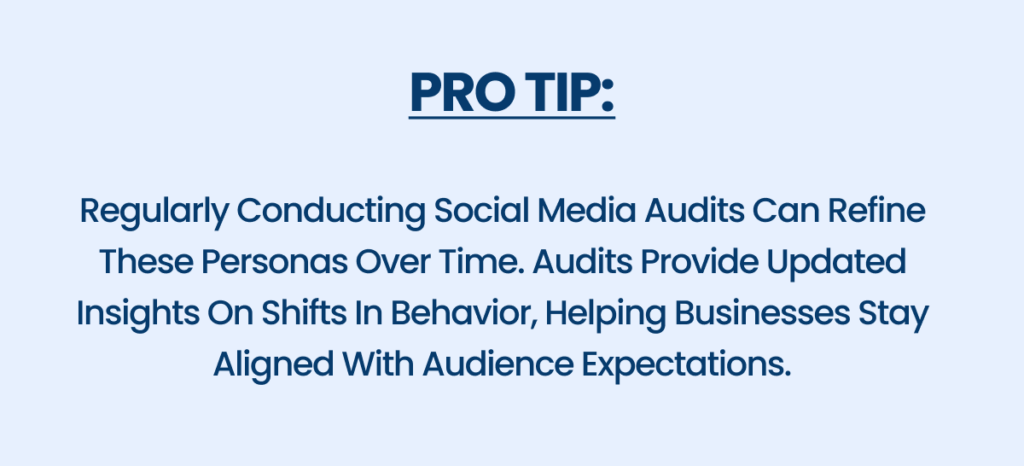
Telling the Story with Data
Ultimately, the goal of unlocking social media insights is to tell the story of your brand’s relationship with its audience.
Each interaction on social media is a piece of the narrative, showing what excites your audience, what turns them off, and what drives them to act.
When you use data to uncover these stories, you can craft better content, drive stronger engagement, and create lasting connections.
Timing is Everything: When Data-Driven Insights Turn Posts from Invisible to Viral
Timing is one of the most crucial—yet often underestimated—aspects of a successful social media strategy.
You could have the most engaging content in the world, but if you’re posting it at the wrong time, it’s likely to fall flat.
Social media insights can give you a competitive edge by helping you determine when your audience is most active.
- Identify Patterns: Analyzing your audience’s interaction times through social media analytics can help you pinpoint when your followers are most likely to engage. Is it during lunch breaks? Late at night? The key is to match your posting schedule to these patterns.
- Platform-Specific Timing: Each platform operates differently. For example, LinkedIn engagement may peak during business hours, while Instagram thrives in the evenings. Use cross-channel analytics to track performance across multiple platforms and adjust your scheduling accordingly.
- A/B Testing Post Times: One of the best ways to hone your posting schedule is through social media a/b testing. Test different times of day for the same post and track performance metrics. What time generates the most clicks? Which slot gets more shares or comments? Use these key insights to create a consistent schedule that aligns with your audience’s habits.
Tools That Turn Noise into Insight: The Best Social Media Analytics Tools
In the fast-paced world of social media, data is constantly flowing—likes, comments, shares, mentions, follows and unfollows.
But how do you transform this overwhelming noise into valuable insights that drive real business growth?
Enter social media analytics tools—the powerhouse solutions that turn raw data into actionable, digestible insights for businesses.
Let’s explore some of the best tools that allow brands to filter through the noise and focus on metrics that matter.
Whether you’re looking to track social media campaigns, optimize content, or fine-tune your social media marketing strategy, these tools can help you gain a deeper understanding of your audience and improve your social media performance.
1. Hootsuite: A Social Media Management All-Rounder
Source: HootSuit
Best for: Comprehensive social media management and scheduling
Key Features:
- Post Scheduling: Hootsuite allows you to schedule posts across multiple social media platforms in one place. This is essential for managing content on various channels while maintaining consistency in your brand voice.
- Cross-Channel Analytics: Gain insights into performance across all your social media channels with its analytics dashboard. Track metrics like engagement rates, click-throughs, and conversions all in one view.
- Competitor Analysis: Use Hootsuite’s analytics feature to track competitors’ performance, giving you a competitive edge by identifying opportunities to outshine them.
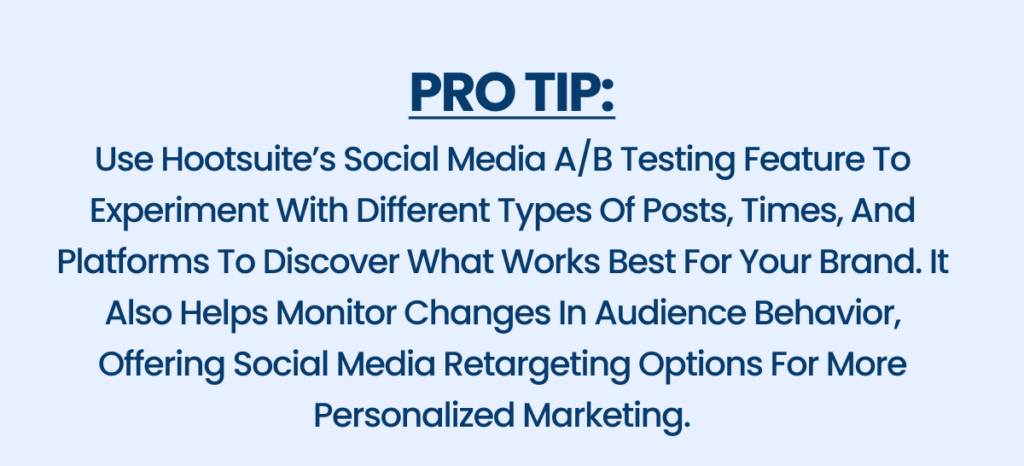
2. Sprout Social: Data-Driven Insights with a Human Touch
Source: SproutSocial
Best for: In-depth analytics and detailed reports
Key Features:
- Detailed Audience Insights: Sprout Social excels in providing a deep dive into your audience’s demographics, behaviors, and preferences. This is crucial for refining your social media content curation and targeting efforts.
- Sentiment Analysis: One of Sprout Social’s standout features is its ability to conduct sentiment analysis. You can monitor the tone of comments and mentions around your brand, helping you keep track of brand health and monitoring brand reputation.
- Actionable Reports: Sprout Social generates clean, customizable reports that are easy to digest and perfect for presenting to your marketing teams or clients. These reports offer actionable insights into your social media efforts and help make data-driven decisions.
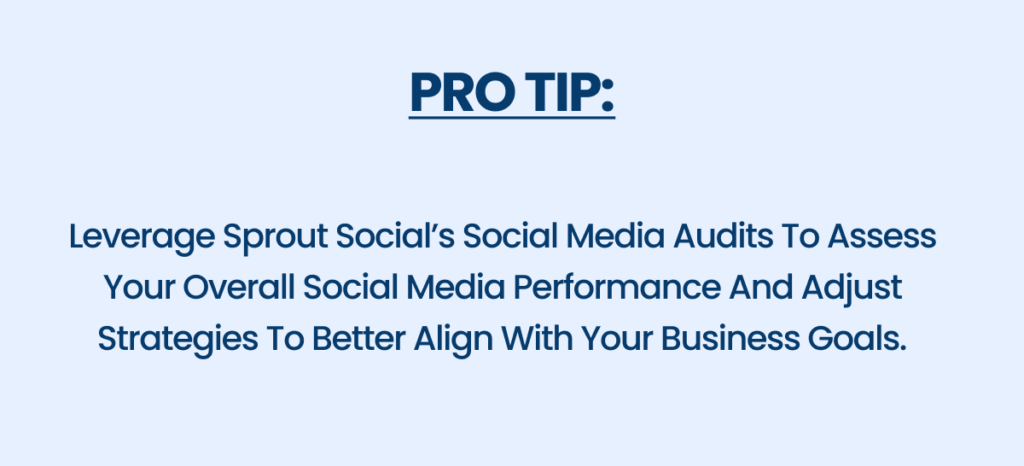
3. Brandwatch: The Powerhouse of Social Listening
Source: BrandWatch
Best for: Social listening and brand monitoring
Key Features:
- Social Listening Insights: Brandwatch’s cutting-edge social listening capabilities allow you to track real-time conversations around your brand, competitors, and industry trends. This feature is crucial for identifying key insights and spotting potential crises before they escalate.
- Sentiment Tracking: Track how your audience feels about your brand with sentiment analysis, allowing you to act swiftly to shift any negative trends in perception.
- Competitive Edge: Use competitor analysis tools to track not only what your competitors are saying but how their audiences are responding. This can help you find gaps in your own social media strategy that you can capitalize on.
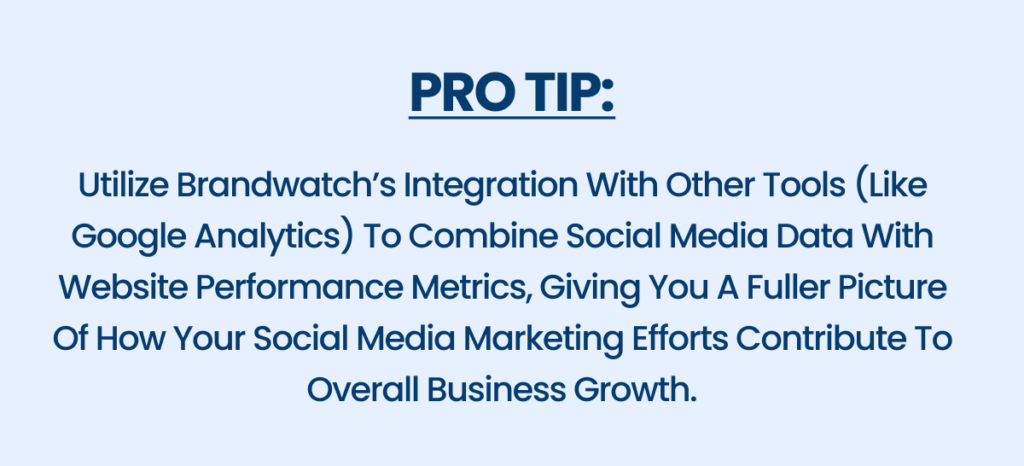
4. Meta Business Suite: Facebook and Instagram Under One Roof
Source: Meta Business Suite
Best for: Managing Facebook and Instagram campaigns
Key Features:
- Unified Platform: Meta Business Suite brings together insights from both Facebook and Instagram, offering a streamlined way to manage and analyze your activity across two of the biggest social media platforms.
- Audience Insights: Track key metrics such as engagement, reach, and demographic breakdowns to optimize your content and advertising strategies. It provides a clear snapshot of who is interacting with your brand.
- Ad Performance: Monitor the effectiveness of your social media campaigns on Facebook and Instagram, allowing for real-time adjustments based on performance data.
Pro Tip: Use the Meta Business Suite to experiment with social media a/b testing for ads and organic posts. You can test different audience segments and ad formats to optimize your social media marketing strategy and maximize ROI.
5. Google Analytics: Linking Social Media and Web Traffic
Source: Google Analytics
Best for: Tracking social media traffic and conversions
Key Features:
- Social Media Traffic Insights: While not exclusively a social media analytics tool, Google Analytics is a must-have for tracking how social media drives traffic to your website. It shows which posts and platforms bring the most visitors, helping you measure your social media lead generation efforts.
- Behavior Flow: Once users land on your site, Google Analytics tracks their journey, allowing you to understand how well your social content is converting visitors into customers.
- Custom Dashboards: Create custom reports to track key performance indicators (KPIs) specific to your social media goals—such as conversions, click-through rates, and page views.
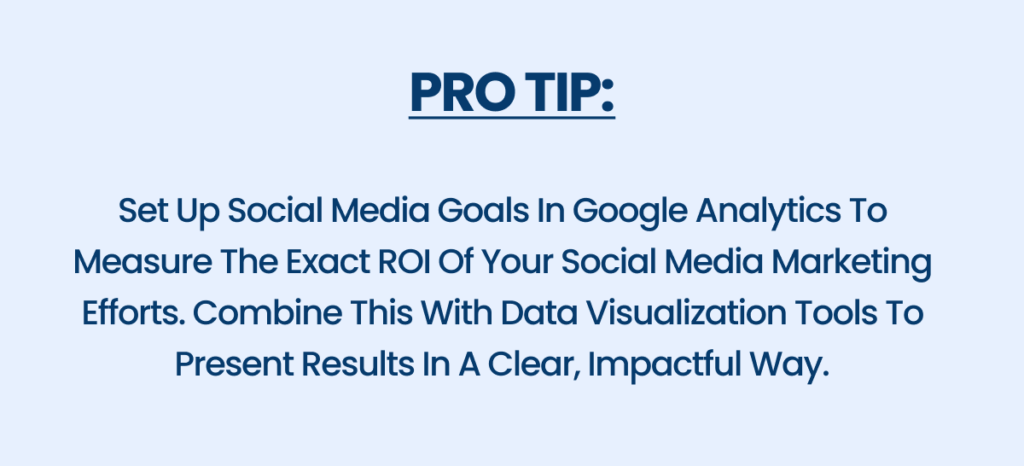
6. Buffer: The Simple Solution for Scheduling and Analytics
Source: Buffer
Best for: Small teams looking for easy-to-use scheduling and analytics tools
Key Features:
- Simplified Scheduling: Buffer makes it easy to schedule and track posts across multiple platforms. This tool is great for marketing teams who want to focus on content creation while automating the logistics of posting.
- Performance Tracking: Get insights into post performance across various social media platforms with simple but effective analytics. Buffer helps you track metrics like engagement, clicks, and overall social media presence.
- Team Collaboration: The tool’s team collaboration feature allows multiple users to access and manage different social media accounts, streamlining the workflow for marketing teams.
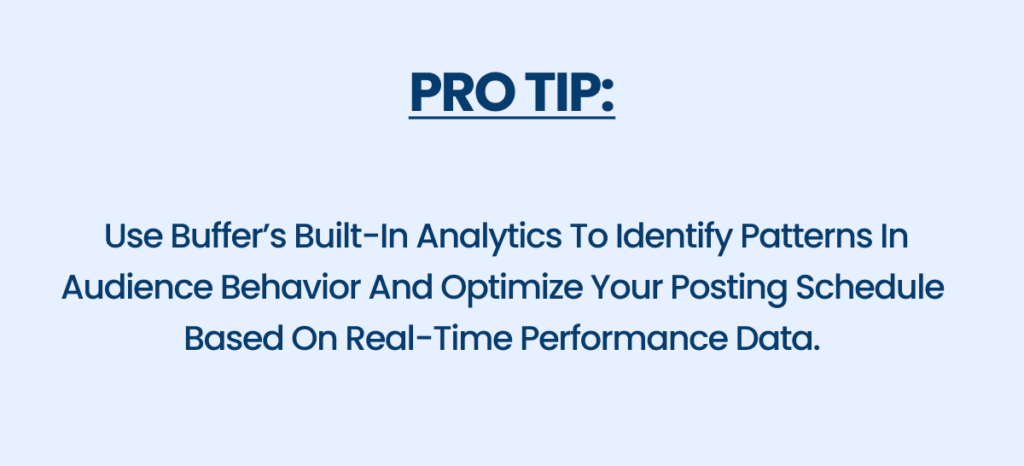
Spotting the Trends: What to Look for and What to Do with It
Spotting trends in social media insights can be the difference between staying ahead of others and missing out on opportunities.
Trends are more than just the latest viral meme or hashtag; they’re patterns in audience behavior that give you clues about what’s working, what’s shifting, and where your audience’s attention is moving.
Identifying these trends allows businesses to adjust their social media strategy in real-time, ensuring they stay relevant and engage more effectively with their target audience.
The first thing to look for is engagement patterns.
This involves tracking which types of content consistently generate higher interaction—whether it’s short-form videos, live streams, or user-generated content campaigns.
By analyzing this data over time, you can pinpoint shifts in preferences.
For example, if your audience is engaging more with interactive content, it may be time to focus on creating polls, quizzes, or question-driven posts that boost participation.
Another key area is timing trends. When are your followers most active?
Social media analytics tools can reveal the best times to post to level up visibility and engagement.
If a pattern shows that your audience tends to engage more during weekends or evenings, adjusting your posting schedule can significantly boost your social media performance.
Small tweaks like these, driven by data, can transform an underperforming post into one that goes viral.
It’s also important to keep an eye on industry-specific trends.
Social media is often where larger digital trends start, and spotting these early can give you a competitive edge.
For instance, if you notice a growing conversation around sustainability in your industry, tapping into that trend with well-crafted content can position your brand as a leader on that topic.
Tools like social listening and competitive analysis help track these broader conversations and keep your brand in sync with evolving consumer expectations.
Finally, consider your competitor analysis. Watching what’s working for your competitors and how their audience is reacting can offer valuable insights.
If a competitor is gaining traction with a new type of content or approach, don’t just mimic them—analyze why it’s working and how you can adapt it to your brand’s unique voice and objectives.
Stories from the Field: Brands Who Turned Insights into Action
Let’s talk about Starbucks.
Picture this: Starbucks is buzzing with millions of customers every day, and naturally, these customers take to social media to chat about their coffee routines.
But here’s the twist—customers weren’t just talking about their regular lattes or cappuccinos.
They were getting creative, sharing their unique, customized drinks with the world.
Using their social media insights, they uncovered a trend: customers wanted to create.
So, they launched the #StarbucksSecretMenu campaign, turning customer creativity into a feature. They promoted fan-inspired drinks, making customers feel seen and involved.
Source: Glamour
The result? A surge in engagement, increased custom orders, and a deeper connection between Starbucks and its audience.
By listening to social media, Starbucks turned data into a personal, impactful strategy.
Now, let’s look at Netflix.
Netflix is a master at using social media data to anticipate trends.
When the series Stranger Things first aired, they noticed an immediate spike in online conversations.
Source: IMDB
But instead of just promoting the show traditionally, Netflix dove into the data and realized fans were obsessing over specific elements—like the 80s nostalgia, the mysterious world of the “Upside Down,” and characters like Eleven.
Netflix didn’t just sit on that data. They leaned into it.
They launched a wave of social media campaigns around those exact fan obsessions, from quizzes about which Stranger Things character you are to live event recreations of key scenes.
They even integrated fan theories into their marketing strategy.
The result? Stranger Things became a cultural phenomenon, with fans driving much of the show’s social buzz.
Netflix proved that by using social media insights smartly, you can turn a good show into an unforgettable global trend.
Turn Insights into Action: Partner with [A] Growth for Social Media Success
Social media insights are your brand’s compass, guiding you through the noise and toward meaningful connections with your audience.
It’s no longer just about posting content—it’s about truly understanding your audience’s habits, preferences, and behaviors.
The brands that thrive are those that don’t just gather data—they listen closely, interpret the story behind it, and transform it into strategies that resonate.
Like Starbucks and Netflix, your brand holds the potential to turn raw data into compelling, high-impact campaigns that not only spark engagement but fuel real growth.
But harnessing these insights takes the right tools, strategy, and expertise.
That’s where [A] Growth Agency comes in. As a leading Social Media Marketing Agency, we specialize in transforming data-driven trends into impactful campaigns that resonate with your audience.
Whether it’s spotting trends or refining your content strategy, our team is here to help you unlock your brand’s full potential.
Let’s take your social media marketing strategy to the next level—partner with [A] Growth Agency and turn insights into action. Your next breakthrough is just a strategy away.
